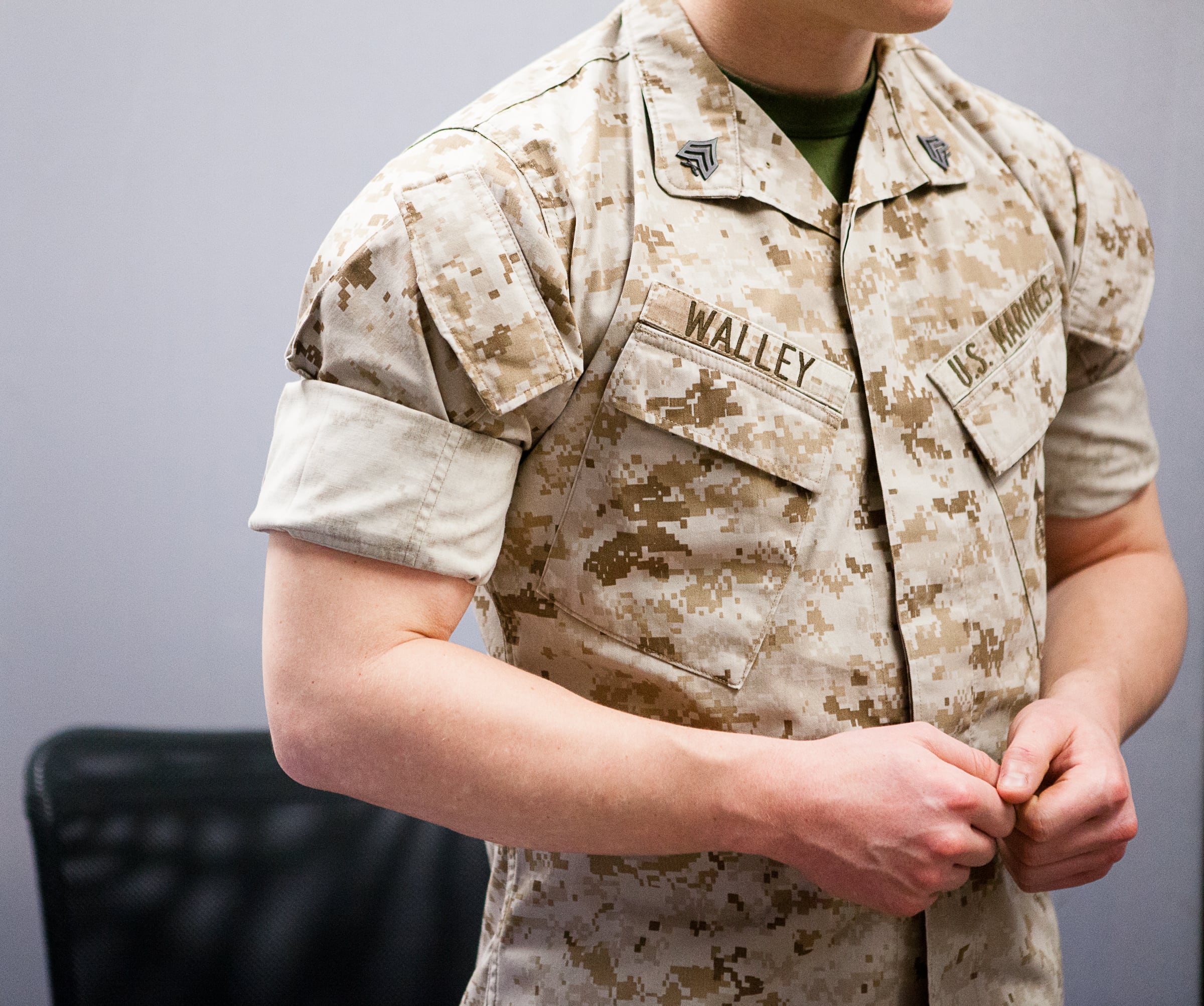In the U.S. Army, soldiers of all ranks are engaging in a different type of gun debate from the rest of the country. At the height of combat in Afghanistan and Iraq, to better condition Soldiers for the realities of persistent engagement in harsh climates, Army leaders closed the gun show and withdrew Soldiers' right to bare arms. Earlier this week, Chief of Staff Gen. Mark Milley and Sergeant Major of the Army Daniel Dailey announced a 10-day pilot to evaluate the possibility of soldiers once again rolling up their sleeves, sparking further debate over whether the Army should adopt its traditional method of rolling sleeves — Camo Out — or a simpler method, Camo In.
The Army is lucky to have no-nonsense leaders such as Milley and Dailey, who are willing to entertain commonsense initiatives from the field. While top leadership innovates, however, it would appear that many soldiers and veterans seek to crimp innovation and roll back the clock, not unlike the widespread desire to revert to the Army's core competency of combined arms maneuver, abandoning a decade-plus of lessons learned in stabilization operations and wide-area security. Camo In is simple, efficient, and forward-looking; a visual indicator of a new era for a new Army. Camo Out is emblematic of the Army's race to the past and a return to its institutional safe space.
In recent polling, Camo Out is obliterating Camo In. As the Army's former method, Camo Out enjoys all the advantages an incumbent can expect: familiarity, predictability, nostalgia for late-Cold War glory days, and name recognition. Indeed, eyes will sparkle for veterans of the 1980s and 1990s as they ramble ad nauseum about mirror-polished boots, razor-sharp uniforms, perfectly round soft-caps, blousing trousers with tin cans, or using duct tape to achieve a perfect pegged leg. The complicated nature of Camo Out (and potential for soldiers looking bad) once paralyzed leaders with fear to the point that sleeves in some units remained down year-round. We are right to leave such ridiculousness behind us.
Camo Out is a relic of the past, where the Army happily occupied a much narrower part on the conflict continuum, was not as globally-engaged as today's Army, and was beset by post-Cold War resource shortfalls. As a result, it looked inward and agonized over uniform trivialities, making uniforms intended for combat as impractical as possible. So much so, that soldiers fell into the trap of attributing life-saving characteristics to uniform minutiae, or mistaking a sharp uniform for discipline or leadership potential. The ability to tug one's sleeves down swiftly was not designed for chemical warfare, and while glossy boots can indicate discipline, so can an exceptionally clean rifle or tank, and with greater utility to the overall organization.

"The Marine way" of rolling sleeves is unappealing to many soldiers.
Photo Credit: Rachel M. Larue/Marine Corps
Never in the history of human combat has rapidly yanking down one's sleeves changed the outcome of a battle, nor has it made soldiers any more or less valorous. True combat soldiers will already have their sleeves down when training, patrolling, or when in potential CBRN environments. Camo Out is aesthetic garrison vanity and nothing more.

Capt. Russell P. Galeti Jr.
Photo Credit: Courtesy
Stripping their arguments bare, Camo Out can be distilled to the same, tired old refrains from those with their glory days long behind them: "it's the way we've always done it", and "we're not the Marines." "The way we've always done it" is no reason to tamp down the pursuit of simple efficiency in favor of the inefficient but familiar. "We're not Marines" implies Camo In was the Marines' idea in the first place. Disregarding the high likelihood that surely somebody at Concord or Lexington rolled their sleeves Camo In, interservice rivalry is no reason not to steal other services' simplest and best ideas.
If "we're not the Marines" is truly the best argument Camo Out has to offer, this should then beg the question, "does the Army really want to look like the Air Force?"
Capt. Galeti is an infantry officer raised in an Army of BDUs and black boots. He is a company commander in the Ohio Army National Guard with service in Iraq and Afghanistan. Views are his own.





